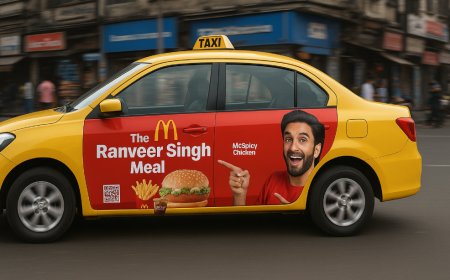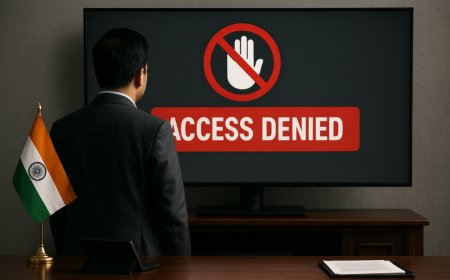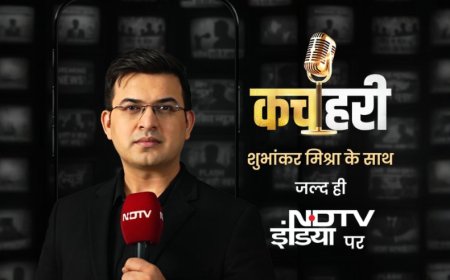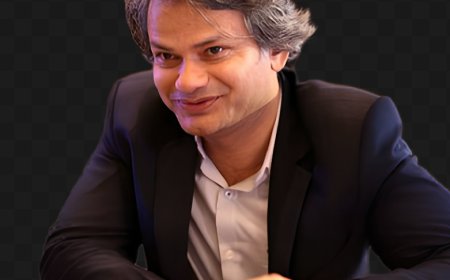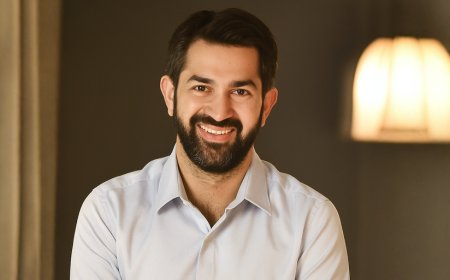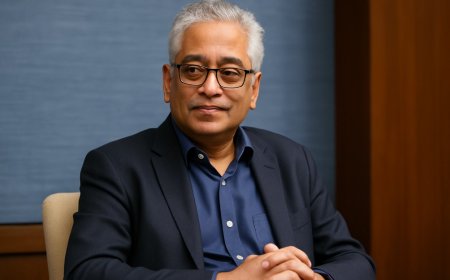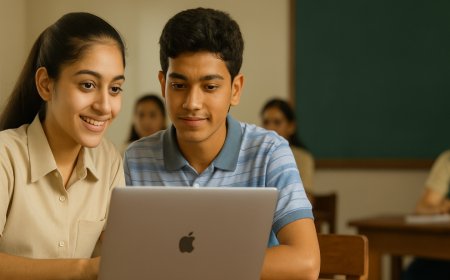‘Kachahari’ with Shubhankar Mishra: NDTV India’s New Show Puts People First
NDTV India’s latest show ‘Kachahari’, hosted by Shubhankar Mishra, focuses on amplifying everyday public interest issues through meaningful debate and community voices. Here’s what viewers can expect and why it matters.
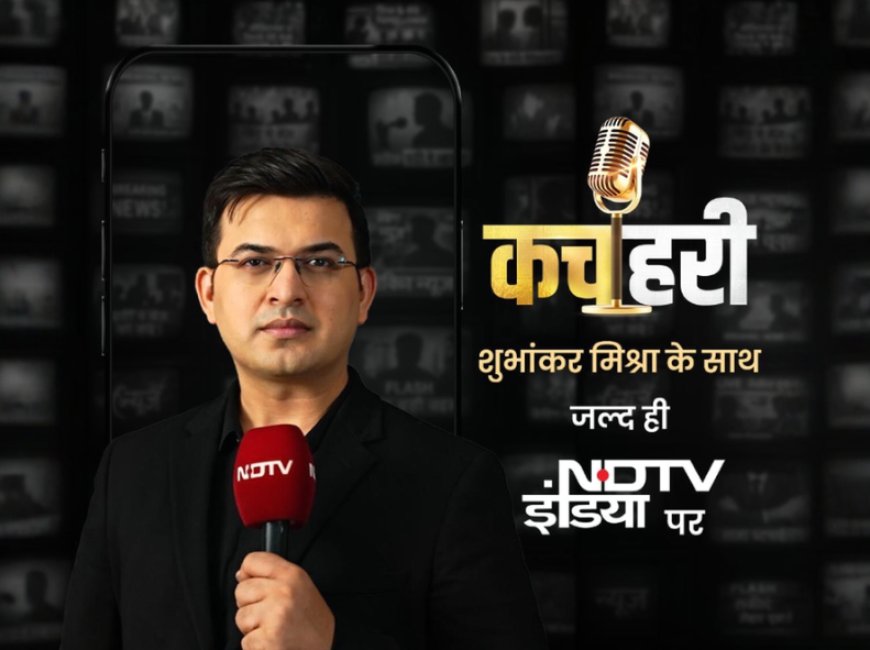
In a time when news often feels like a noisy battlefield of sound bites and shouting matches, a new show promises to bring things back to what really matters — the people. NDTV India’s ‘Kachahari’, helmed by well-known news anchor Shubhankar Mishra, aims to be that rare space where real public concerns take centre stage and viewers feel heard, not shouted down.
‘Kachahari’, which translates to ‘courtroom’ or ‘people’s court’, brings back an old-school concept — a space where people gather, present their problems, question those in power, and seek answers together. In today’s polarized media landscape, this is more than just another talk show — it’s an attempt to make the common citizen the heart of every discussion.
Let’s take a closer look at what this new show is about, what it hopes to achieve, and why Shubhankar Mishra is the right face to lead it.
Who is Shubhankar Mishra?
For those who follow Indian news, Shubhankar Mishra is a familiar face. Known for his straightforward delivery and calm yet assertive anchoring style, Mishra has built a reputation as one of India’s promising young news presenters.
Before joining NDTV India, he worked with various national channels where he covered politics, social issues, and big breaking news stories. His connection with viewers has a lot to do with his conversational style — he doesn’t talk down to people but talks with them.
With ‘Kachahari’, Mishra takes on an even more people-centric role — moving from the studio desk to the heart of communities, giving a platform to stories that often get lost in the noise.
Why ‘Kachahari’?
The idea behind the show is rooted in a simple observation: ordinary people have extraordinary stories, but they rarely find space on prime-time news. While TV debates often focus on heated arguments between politicians, ‘Kachahari’ flips the lens to those affected by these debates — the citizens.
The show wants to revive the culture of healthy questioning and constructive discussion. It aims to highlight practical issues like access to education, healthcare gaps, farmers’ concerns, urban woes like pollution or water shortages, and many more — all directly from the people who live these realities daily.
How the Show is Structured
‘Kachahari’ follows a format that feels refreshingly participatory in today’s age of scripted panels. Each episode takes up a pressing local or national issue. Shubhankar Mishra and his team travel to different parts of India — big cities, small towns, and villages — to meet citizens where they are.
The audience is not just an audience — they are the participants. Locals share personal experiences, pose tough questions to officials, and sometimes even get answers from policymakers invited to the show. Experts and activists add context and possible solutions, but the people’s voice stays front and centre.
In that sense, ‘Kachahari’ feels like a modern version of the traditional village ‘chaupal’ — where communities gathered under a banyan tree to resolve disputes and find answers together.
Connecting to NDTV’s Legacy
NDTV has long carved its niche as a news network that often puts people before politics. Known for its measured reporting, NDTV has stayed away from the high-decibel theatrics that dominate some other news channels. Shows like ‘Hum Log’ and ‘We The People’ have been celebrated for focusing on social concerns and civil discourse.
With ‘Kachahari’, NDTV India seems to be doubling down on this people-first DNA. By sending an anchor like Shubhankar Mishra directly to the ground, the channel signals that it wants to do more than just studio debates — it wants to bring real stories to viewers’ screens.
What Issues Will ‘Kachahari’ Highlight?
The topics lined up for the initial episodes touch on issues that affect millions yet often get overshadowed by headline politics:
-
Rural Distress: Stories of farmers struggling with loan burdens, crop losses, and changing weather patterns.
-
Urban Challenges: How cities are coping with garbage management, air quality, traffic, and housing crunches.
-
Youth Voices: Students speaking up about education costs, unemployment, and skill-building.
-
Women’s Safety: Local communities debating how public spaces can be made safer for women and children.
-
Public Health: Access to basic healthcare in remote areas and the hidden gaps that the pandemic revealed.
Each issue comes alive through people’s real experiences, not just statistics.
Why This Format Matters Now
For news to truly serve democracy, it must amplify the questions of those who are rarely heard — daily wage workers, students in small towns, women juggling unpaid care work, farmers facing erratic monsoons. But in the race for higher TRPs, such voices often get squeezed out by louder, more divisive debates.
‘Kachahari’ taps into an unmet demand: viewers are tired of political blame games; they want solutions. They want their everyday battles — rising food prices, poor infrastructure, education access — to be part of national conversations.
By choosing to anchor these conversations outside the studio, NDTV and Mishra send a clear signal: the real newsroom is not the news desk — it’s India’s streets and mohallas.
Building Community Involvement
One standout feature of ‘Kachahari’ is that it’s not just a TV show — it hopes to spark local action too. By holding leaders accountable on camera and presenting problems with context and solutions, the show aims to nudge local administrations and communities to step up.
Viewers are encouraged to write in, share their grievances, and even suggest which issues the ‘Kachahari’ team should cover next. This two-way bridge — between the show and the people it serves — is what sets it apart from typical primetime panels.
How Shubhankar Mishra Makes It Work
Anchoring a people’s show is not just about asking questions — it’s about listening. Mishra’s calm demeanor, sharp questioning, and ability to create a safe space for guests to speak up make him a good fit for this format.
In clips from early shoots, Mishra is seen chatting with villagers on charpoys, listening to elders share stories, and patiently translating their concerns into clear, actionable questions for those in power. It’s not a performance — it’s journalism in its rawest, most impactful form.
Where and When to Watch
‘Kachahari’ airs on NDTV India during a prime evening slot, with repeats over weekends for wider reach. For younger audiences, highlights and full episodes are also available on NDTV’s digital platforms and social media, making it easy for people to tune in anytime, anywhere.
Segments are clipped and shared on YouTube, Facebook, and Instagram, ensuring that even if you miss the live broadcast, the most powerful moments — a question that stumped an official, an emotional testimony — still find you on your feed.
The Road Ahead: Can TV Shape Change?
Can a single show fix all problems? Of course not. But ‘Kachahari’ is a reminder that news can do more than relay information — it can build pressure for change. By spotlighting neglected local issues on a national stage, it can push authorities to respond faster and inspire other communities to speak up.
If the show finds its audience — and keeps the conversation real and honest — it could become a template for how Indian TV news can evolve in the age of noise: by turning the volume down on the studio and turning the mic towards the people.
Final Thoughts: A Courtroom for the People
In its name, format, and promise, ‘Kachahari’ stands out as a people’s court — not one of legal verdicts but of democratic accountability. At a time when trust in media is under strain, shows like this remind us of journalism’s first duty: to give people a voice.
What's Your Reaction?
 Like
0
Like
0
 Dislike
0
Dislike
0
 Love
0
Love
0
 Funny
0
Funny
0
 Angry
0
Angry
0
 Sad
0
Sad
0
 Wow
0
Wow
0





